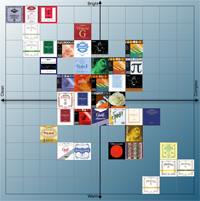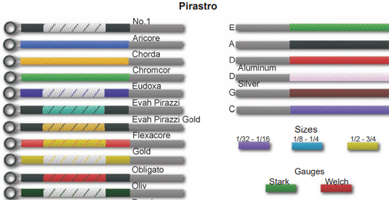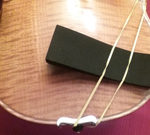In Part 1, we identified the strings that walked in the door on our student’s instrument. Now in Part 2, we’ll explore the possibilities that a change of strings can bring!
When Cheap Violins Meet Expensive Strings
Something I love to do for students is determine the optimum type of strings for their instrument. Lessons are often started on an inexpensive instrument with bargain-basement solid-steel strings (I’m looking at you, Red Label). The sound is typically tinny, narrow and eardrum-piercing. While a sub-$500 “student instrument” certainly isn’t made to high-quality specs with the finest woods, fittings and varnish, it is amazing the difference that can be made in the sound by putting a really great set of strings on. Continue reading “Selection Tools for Violin Strings, Part 2”



 I’ve been experimenting with different types of shoulder rests for several years now, trying to find the perfect design and placement to give me a secure hold so I can play with accuracy and comfort. However, since I’m built slightly like a
I’ve been experimenting with different types of shoulder rests for several years now, trying to find the perfect design and placement to give me a secure hold so I can play with accuracy and comfort. However, since I’m built slightly like a  I thought I had settled on the small, firm
I thought I had settled on the small, firm